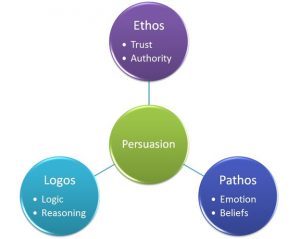In the arena of online marketing, persuasive writing is one of the best strategies business owners can deploy. Too often do informative and helpful articles fall short of their goals to convert readers into customers or clients. Persuasive writing techniques can help cut down the fat of your articles and communicate to readers your expertise.
One common misconception about persuasive writing ought to be dispelled before we proceed. Persuasive writing is not a con job and does not require dishonest attempts at clickbait in order to drive reader interest. In this article, we hope to provide you with a few key tips on how to best approach the art of persuasive writing in an honest and effective way.
It may seem intuitive that knowing one’s audience is an essential component of persuasive writing. It is nonetheless true and worth repeating. Let’s say you are writing an article with steps for quick recipes that can feed a family of five. In this case, it would likely be best to keep the recipes quick and to the point.
Not every article would call for the snappiness of our example, and that is much the point. Understanding your audience and what information they need is the first step to crafting content that caters to the audience’s needs. Read here for more on the value of understanding your audience.
Contents
Appeal to Emotion with Empathy
Empathy is a critically overlooked aspect of persuasive writing. Connecting with an audience over shared emotional experiences, especially pain, is a very effective way to communicate persuasively. Due to its power, empathy should be handled carefully and not used to manipulate or exploit an audience.

For example, tapping into our shared misery during the pandemic is not exploitative, but can be rather emotionally honest. The COVID-19 pandemic has not only exposed many of the mental health issues so many of us face on a daily basis, but also offers a point of connection to which we can all relate.

This grants each of us the ability to demonstrate “cognitive empathy” as shown in the above image. It is as easy to understand and connect with readers over this shared trauma as it is rare to find someone unaffected by it.
Addressing issues from an emotionally honest and empathetic perspective will draw readers to your solutions. If you can forge this emotional connection with your audience, much of the persuasive writing in your content will be already taken care of.
Appeal to Logic with Facts and Data
While appealing to emotion through empathy is a core element of persuasive writing, it is not the only point of connection you can make with your audience. Some readers will be more analytical and will appreciate logic and evidence to support your arguments. By pairing data that speaks to your reasoning with an empathetic angle, you can more effectively deliver your message to a broad audience.
Present several options to your readers and stress the strength of your answers over the other possibilities. Addressing objections to your claim and refuting them will help illustrate your point and project confidence. Introducing statistics and data which support your argument will also help in this regard.

Remember: logical arguments with no emotional appeal can work, but may alienate readers longing for an empathetic connection. Likewise, emotional arguments presented without supporting evidence may fail to convince readers hungry for a demonstration of expertise.
Be Succinct and Grab Attention
One tip which can save readers from losing interest early is to use a hook in your introduction. Asking readers a question or exposing a problem in need of a solution are good examples of an effective hook. Utilizing a bit of humor might help as well, although it may not land with all readers. As long as your readers are aware of what the content is about and why they should care to continue reading, they are much more likely to stay on your page.
Opening with a long-winded anecdote may work in blogs with a loyal readership. But reaching new audiences and converting them to clients, customers, or subscribers takes convincing. Your article will not see the light of day if you lose reader attention at the starting line.
An effective way to unite the principles of persuasive writing we have already shared with you is to share a personal story. We have another article on our blog precisely about the strength of storytelling in persuasive writing.
Essentially, stories are strong points of connection between writers and their audiences. We connect to stories on a deeply emotional level, as seen in the success of storytelling in films and television. Share a personal story that can communicate empathy and expertise to your audience and persuasive writing will naturally emerge.
Conclusion
Hopefully, you have found our guide to persuasive writing helpful and perhaps even persuasive. From here we encourage you to consider ways you can incorporate some or all of these tips in your own writing. Feel free to check out more articles on our blog about SEO and the benefits of targeting content to human readers, which will help you out with Google’s algorithm.


